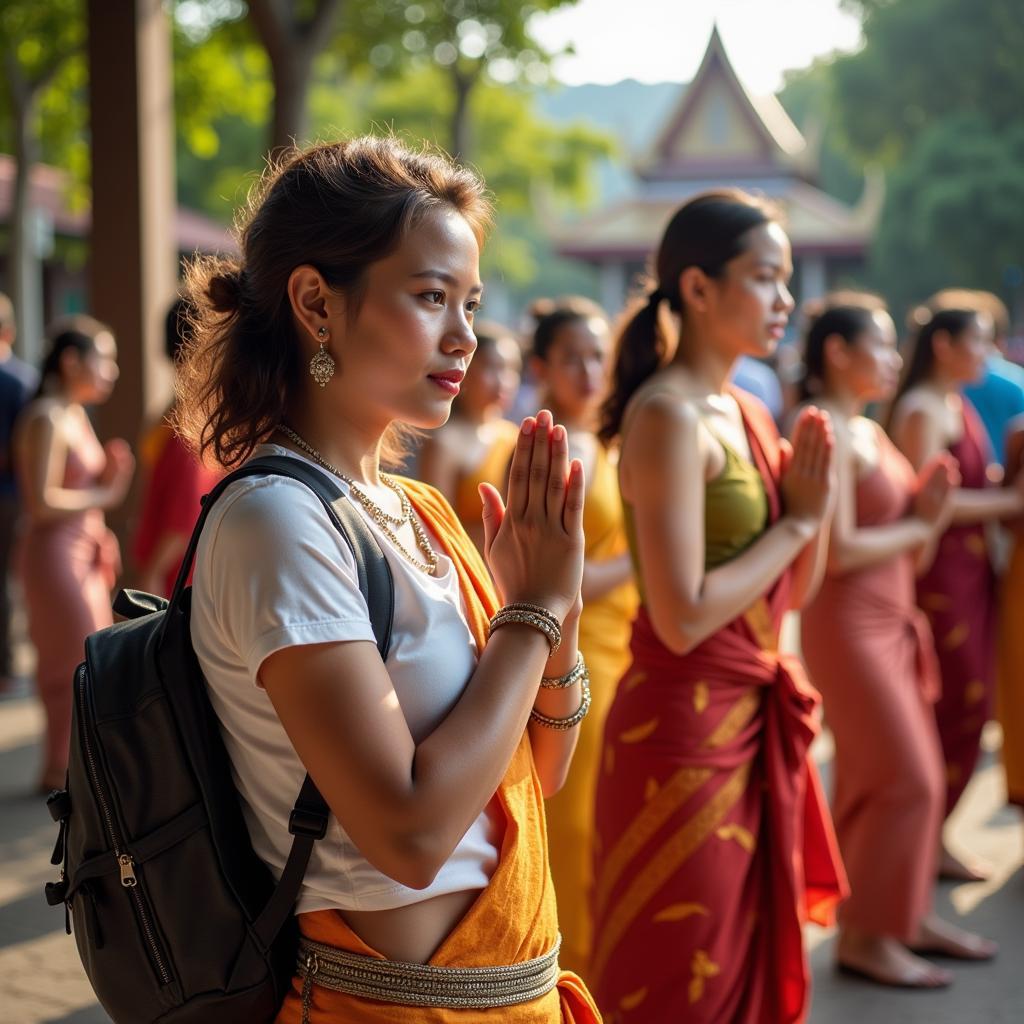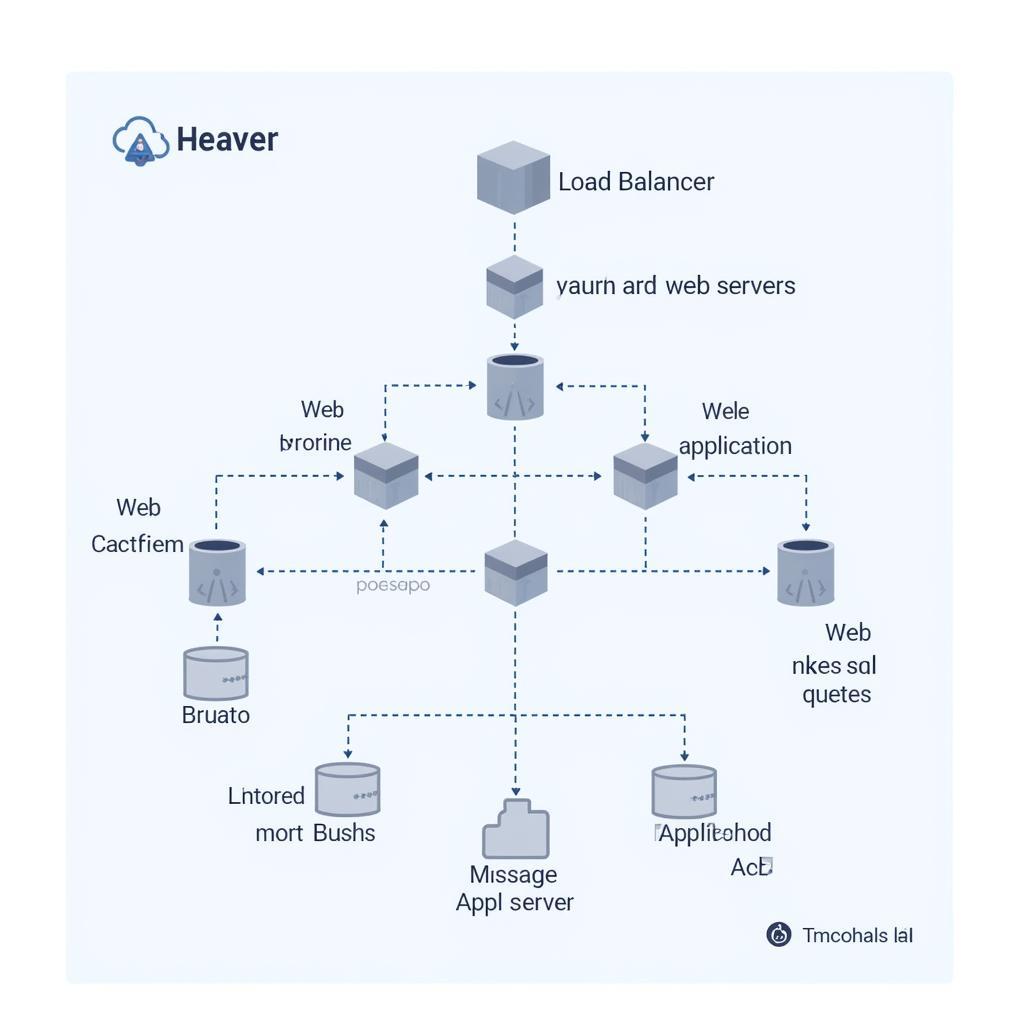Southeast Asia, a vibrant tapestry of cultures and traditions, offers a unique experience for any traveler. Understanding the nuances of “Asean 10 Countries Greetings” can enrich your journey and foster deeper connections with the local people. From the wai in Thailand to the sampeah in Cambodia, each greeting reflects the values and history of its respective nation.
Unveiling the Warmth: ASEAN 10 Countries Greetings
Southeast Asia’s diverse cultural landscape is reflected in its various forms of greetings. These greetings are more than just simple hellos; they’re a window into the soul of each nation. Let’s explore the unique “asean 10 countries greetings” across the region.
- Brunei: A handshake is common, especially in business settings. For more traditional greetings, a slight bow with hands clasped together at chest level is respectful.
- Cambodia: The sampeah, a graceful gesture with palms pressed together at chest level, is the traditional Cambodian greeting. The higher the hands, the more respect is shown.
- Indonesia: A handshake is common, often accompanied by a slight bow. The phrase “Selamat pagi” (Good morning), “Selamat siang” (Good afternoon), or “Selamat malam” (Good evening) adds a touch of local flavor.
- Laos: The nop, similar to the sampeah, is the traditional Lao greeting. Hands are pressed together at chest level, and a slight bow is customary.
- Malaysia: A handshake is standard practice. Muslims may use the Arabic greeting “Assalamualaikum” (Peace be upon you), followed by a gentle handshake.
- Myanmar: A slight bow with hands clasped together in front of the body is a respectful greeting. The phrase “Mingalaba” (Hello) is commonly used.
- Philippines: A handshake is typical, and Filipinos are known for their warm smiles. “Magandang umaga” (Good morning), “Magandang hapon” (Good afternoon), or “Magandang gabi” (Good evening) are also used.
- Singapore: A handshake is the standard greeting in this multicultural nation.
- Thailand: The wai, a graceful bow with palms pressed together, is the traditional Thai greeting. The higher the hands and the deeper the bow, the more respect is conveyed.
- Vietnam: A handshake is becoming increasingly common, especially in urban areas. A slight bow is also acceptable.
Beyond the Hello: The Significance of ASEAN Greetings
Understanding the cultural nuances behind “asean 10 countries greetings” is crucial for building rapport and demonstrating respect. These greetings are deeply rooted in the history and values of each nation, reflecting principles of respect, humility, and community.
Why Learning Local Greetings Matters
Learning local greetings shows you value the local culture. It can open doors to meaningful interactions and create a positive first impression. It’s a small gesture that can go a long way in building bridges between cultures.
 Respectful Greetings in ASEAN
Respectful Greetings in ASEAN
“Greetings are more than just words; they are a reflection of a culture’s values. Taking the time to learn them demonstrates respect and fosters genuine connection,” says Dr. Anya Sharma, a cultural anthropologist specializing in Southeast Asia.
Navigating Cultural Etiquette in Southeast Asia
Beyond “asean 10 countries greetings,” understanding other aspects of cultural etiquette is also important. Being mindful of local customs, such as removing shoes before entering a home or temple, can further enhance your cultural sensitivity. asean backpacking
“By understanding and respecting local customs, you not only show your appreciation for the culture but also create a more positive and meaningful travel experience for yourself,” adds Dr. Sharma. ase erfahrung
In conclusion, understanding “asean 10 countries greetings” is a key part of experiencing the rich cultural tapestry of Southeast Asia. By taking the time to learn these gestures, you can foster genuine connections with local people and show your respect for their traditions. ase phone hours Embracing the diversity of “asean 10 countries greetings” will undoubtedly enrich your journey through this fascinating region. aa dfw to ase asea global phone number
FAQ:
- What is the most common greeting in Southeast Asia?
- What is the significance of the wai in Thailand?
- How do I greet someone in Indonesia?
- Are handshakes acceptable in all ASEAN countries?
- Why is it important to learn local greetings?
- What are some other cultural etiquette tips for Southeast Asia?
- Where can I learn more about ASEAN cultures?
When you need help, please contact Phone Number: 0369020373, Email: aseanmediadirectory@gmail.com or visit our address: Ngoc Lien Village, Hiep Hoa, Bac Giang, Vietnam. We have a 24/7 customer service team.
